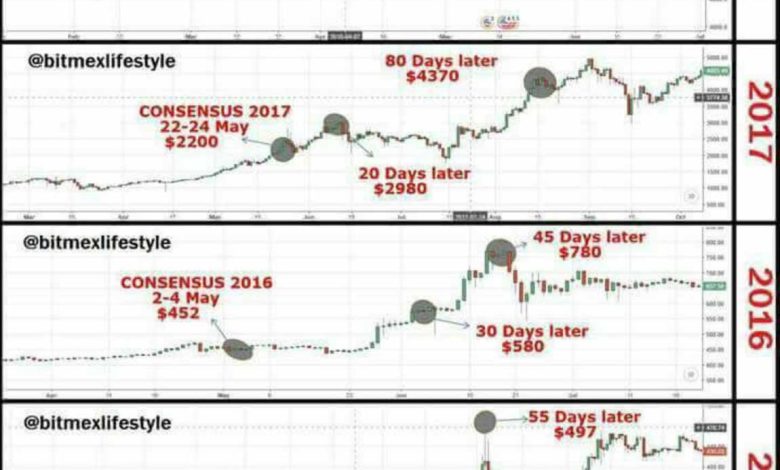Understanding Market Cycles and Trends in Crypto

- Introduction to Market Cycles in Crypto
- Exploring the Impact of Market Trends on Crypto Investments
- Identifying Key Indicators of Market Cycles in the Crypto Space
- Strategies for Navigating Volatility in Cryptocurrency Markets
- Analyzing Historical Data to Predict Future Market Trends in Crypto
- The Role of Sentiment Analysis in Understanding Market Cycles in Cryptocurrency
Introduction to Market Cycles in Crypto
Understanding market cycles in the cryptocurrency space is crucial for investors looking to make informed decisions. Market cycles refer to the recurring patterns of growth and decline that cryptocurrencies experience over time. By analyzing these cycles, investors can better predict when to buy or sell their assets.
Market cycles in crypto typically consist of four main phases: accumulation, uptrend, distribution, and downtrend. During the accumulation phase, prices are relatively low as investors slowly start buying up assets. This is followed by the uptrend phase, where prices steadily increase as more investors jump on board.
As the market reaches its peak, it enters the distribution phase, where early investors begin to sell off their assets to lock in profits. Finally, the market enters the downtrend phase, where prices start to decline as investors panic sell.
By understanding these market cycles and trends, investors can make more strategic decisions about when to enter or exit the market. It’s essential to conduct thorough research and analysis to stay ahead of the curve and maximize profits in the volatile world of cryptocurrency trading.
Exploring the Impact of Market Trends on Crypto Investments
Understanding market trends is crucial for making informed decisions when it comes to investing in cryptocurrencies. Market trends can have a significant impact on the value of crypto assets, influencing when to buy or sell for optimal returns. By exploring the impact of market trends on crypto investments, investors can better navigate the volatile nature of the crypto market.
One key market trend that affects crypto investments is the concept of market cycles. Market cycles refer to the recurring patterns of growth and decline in the crypto market. By analyzing past market cycles, investors can gain insights into potential future trends and make more strategic investment decisions. Recognizing where the market is in its current cycle can help investors anticipate when to enter or exit positions.
Another important factor to consider is the influence of external market trends on crypto investments. External market trends, such as global economic conditions or regulatory developments, can impact the overall sentiment towards cryptocurrencies. By staying informed about these external factors, investors can better understand the broader market landscape and adjust their investment strategies accordingly.
Moreover, technological advancements and innovations within the crypto space can also drive market trends. New developments in blockchain technology or the introduction of new cryptocurrencies can create opportunities for investors to capitalize on emerging trends. Keeping abreast of these technological advancements can provide investors with a competitive edge in the market.
In conclusion, exploring the impact of market trends on crypto investments is essential for navigating the dynamic and ever-changing crypto market. By understanding market cycles, external market trends, and technological advancements, investors can make more informed decisions and position themselves for success in the world of cryptocurrency investing.
Identifying Key Indicators of Market Cycles in the Crypto Space
Identifying key indicators of market cycles in the crypto space is crucial for investors looking to make informed decisions. By understanding these indicators, investors can better predict trends and capitalize on opportunities in the market.
One key indicator to look out for is trading volume. High trading volume often indicates increased interest and activity in a particular cryptocurrency, which can signal a potential uptrend. Conversely, low trading volume may suggest a lack of interest or a possible downtrend.
Another important indicator is price movements. Analyzing price charts can help investors identify patterns and trends that may indicate where the market is headed. For example, a series of higher highs and higher lows could signal an uptrend, while lower highs and lower lows may indicate a downtrend.
Sentiment analysis is also a valuable tool for identifying market cycles. Monitoring social media, news articles, and forums can provide insights into how investors are feeling about a particular cryptocurrency. Positive sentiment may indicate a bullish trend, while negative sentiment could signal a bearish trend.
Lastly, keeping an eye on market capitalization can help investors gauge the overall health of the market. A rising market cap suggests growing interest and investment in cryptocurrencies, while a declining market cap may indicate a lack of confidence among investors.
Strategies for Navigating Volatility in Cryptocurrency Markets
When it comes to navigating the volatility in cryptocurrency markets, there are several strategies that can help investors manage risk and capitalize on opportunities. Understanding market cycles and trends is crucial for making informed decisions in this fast-paced environment.
- Diversification: One of the most effective ways to mitigate risk in cryptocurrency investing is to diversify your portfolio. By spreading your investments across different assets, you can reduce the impact of volatility on your overall returns.
- Stay Informed: Keeping up to date with the latest news and developments in the cryptocurrency space is essential for identifying trends and potential opportunities. By staying informed, you can make more educated decisions about when to buy or sell.
- Set Stop-Loss Orders: Setting stop-loss orders can help protect your investments from significant losses during market downturns. By establishing predetermined exit points, you can limit your downside risk and preserve capital.
- Utilize Technical Analysis: Technical analysis involves studying historical price charts and using mathematical indicators to forecast future price movements. By analyzing trends and patterns, you can make more accurate predictions about where the market is headed.
- Emotional Discipline: Emotions can often cloud judgment and lead to impulsive decision-making in cryptocurrency trading. It is essential to remain disciplined and stick to your trading plan, regardless of market fluctuations.
By implementing these strategies and staying vigilant in monitoring market cycles and trends, investors can navigate the volatility in cryptocurrency markets more effectively. Remember that volatility is a natural part of the cryptocurrency market, and by being prepared and informed, you can position yourself for long-term success.
Analyzing Historical Data to Predict Future Market Trends in Crypto
Cryptocurrency market trends can be analyzed by looking at historical data to predict future movements. By examining past price patterns, trading volumes, and market capitalization, investors can gain insights into potential market cycles and trends. This data-driven approach allows for a more informed decision-making process when it comes to buying, selling, or holding onto cryptocurrencies.
One key aspect of analyzing historical data is identifying recurring patterns or cycles in the market. These patterns can provide valuable information about when to enter or exit trades, as well as when to expect price fluctuations. By studying these trends, investors can better understand the market dynamics and make more strategic investment decisions.
Another important factor to consider when analyzing historical data is the impact of external events on market trends. News, regulatory changes, and technological advancements can all influence the price of cryptocurrencies. By taking these factors into account, investors can better anticipate market movements and adjust their strategies accordingly.
Overall, analyzing historical data is an essential tool for predicting future market trends in the cryptocurrency space. By leveraging this information, investors can make more informed decisions and potentially increase their chances of success in the volatile world of crypto trading.
The Role of Sentiment Analysis in Understanding Market Cycles in Cryptocurrency
Sentiment analysis plays a crucial role in understanding market cycles in the cryptocurrency space. By analyzing the emotions and opinions expressed by market participants, we can gain valuable insights into the overall market sentiment and predict potential trends and shifts in the market.
One of the key benefits of sentiment analysis is its ability to provide real-time data on how investors feel about a particular cryptocurrency. This information can help traders and investors make more informed decisions based on the prevailing sentiment in the market.
Moreover, sentiment analysis can also help identify market manipulation and detect potential pump-and-dump schemes. By monitoring social media channels, forums, and news outlets, we can pinpoint any abnormal spikes in sentiment that may indicate fraudulent activities in the market.
Overall, sentiment analysis is a powerful tool that can provide valuable insights into market cycles and trends in the cryptocurrency space. By leveraging this technology, traders and investors can stay ahead of the curve and make more informed decisions in their trading strategies.



